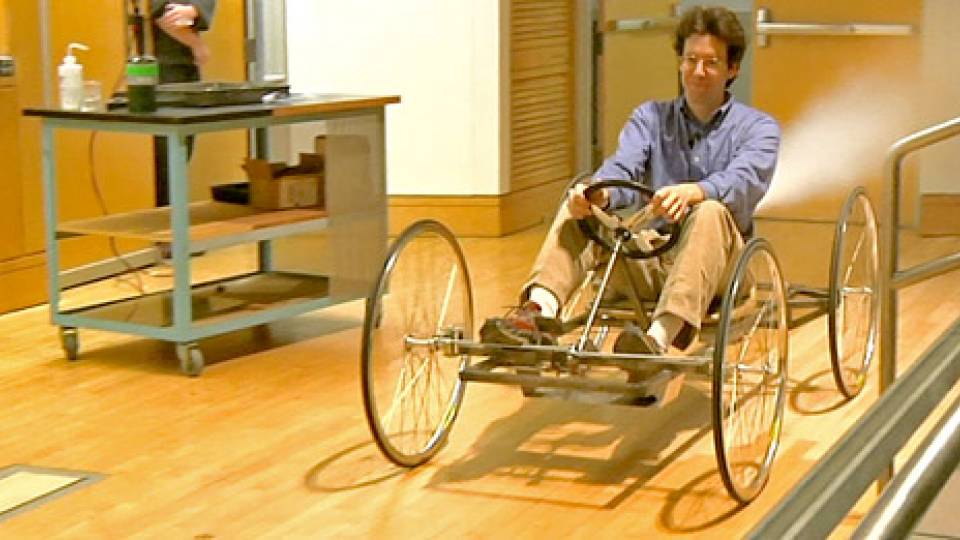Searching for common elements in seemingly incompatible scientific theories may lead to the discovery of new ones that revolutionize our understanding of the world.
Such is the idea behind a mathematical framework Princeton University researchers developed that strips away the differences between scientific laws and theories to reveal how the ideas are compatible. In a recent report in the journal Physical Review Letters, the authors explain how the mathematical model finds common ground between the famously at-odds physics equations that govern classical and quantum mechanics.
In their paper, the researchers attempt to reconcile classical and quantum mechanics. Simply put, classical mechanics — based on the ideas of English scientist Isaac Newton — describes the ordered laws of motion for large objects and systems. Quantum mechanics relates more to the chaotic motion and activity of microscopic particles.
Lead author Denys Bondar, a postdoctoral research associate in Princeton's Department of Chemistry, explained that the Princeton framework — called operational dynamic modeling — is intended to streamline the development of novel theories, a typically painstaking process that can be for naught if the end result does not agree with experimental data. The framework unpacks and mathematically tests the basic algebra of a theory against that of observed data. If they reconcile, the newborn theory might be valid, Bondar said.
"We have a new theoretical tool that we can use to look at old problems and try to solve new problems," Bondar said. He worked with second author Renan Cabrera, a Princeton postdoctoral research associate in chemistry; senior researcher Herschel Rabitz, Princeton's Charles Phelps Smyth '16 *17 Professor of Chemistry; Robert Lompay, a physics graduate student at Uzhgorod National University in Ukraine; and Misha Ivanov, a physics professor at Imperial College London.
The Princeton model builds on theorems that Austrian physicist Paul Ehrenfest developed in the 20th century to illustrate the similarities between classical and quantum mechanics. Putting these theorems into action, Bondar and his colleagues pared the differences between these branches of physics down to a single mathematical consideration: to commute or not to commute. This Shakespearean-sounding crossroads relates to whether the result relies on the order of the experimental measurements.
If the same conclusion can be drawn regardless of how the measurements are arranged, the theory is commutative. If the result depends on a specific sequence, it is non-commutative. At this point, any novel theory can be characterized as classical or quantum, Bondar said. If the theory is commutative it is classical; if not, it has quantum elements.
"Scientists are taught from the time they are students that classical and quantum mechanics can never be reconciled," Bondar said. "But now we have one equation for classical and quantum mechanics. We can make the transition from classical to quantum mechanics in a smooth and straightforward way."
The benefit of the model, Cabrera said, is that experimental systems can be constructed more in accordance with particular mechanics as they are being developed. In addition, it can reveal if and how a novel theory relates to classical or quantum mechanics in a way that might not have been considered initially, he said.
"This model allows us to experience mathematically classical or quantum theories in a more similar way than before and find common ground only differentiated by the ability to commute or not commute," Cabrera said.
Robert Gilmore, a physics professor at Drexel University, said that the Princeton framework is a unique and well-designed initial step toward bringing classical and quantum mechanics under the same theoretical roof. Gilmore is familiar with the work, but had no role in it.
The researchers "provide the smoothest possible transition from quantum mechanics to classical mechanics," Gilmore said. "Their vision is that it is possible to formulate physical theory in such a way that both classical mechanics and quantum mechanics play by the same rules. In order to do this, they upend one of the classical early results of quantum mechanics: the Ehrenfest theorems."
Though the model is simple — its experimental basis is the position and velocity of a single electron — it could be matured to describe more complicated physical phenomena, Gilmore said.
"In order to deepen our understanding of quantum mechanics, this theory must be extended in several directions," he said. "This paper seems to provide one footing for a larger foundation that will be needed to build a more comprehensive theory including both classical and quantum mechanics."
The paper, "Operational Dynamic Modeling Transcending Quantum and Classical Mechanics," was published Nov. 9 in Physical Review Letters. It was supported by grants from the National Science Foundation and the U.S. Army Research Office.
